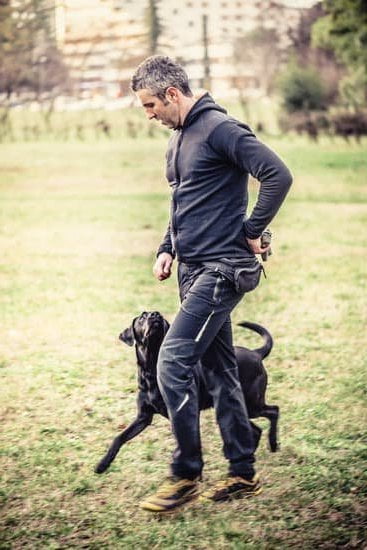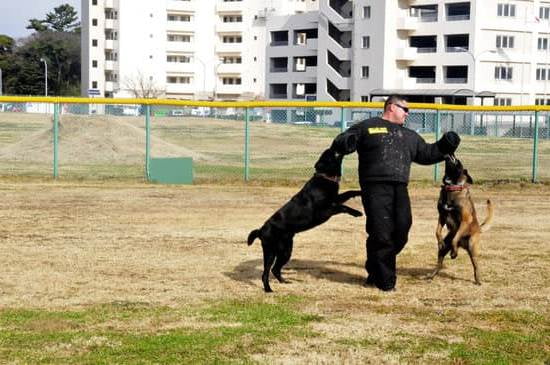Dog obedience training is essential for the well-being of your furry friend and the harmony of your home. Whether you have a new puppy or an older dog, it’s never too late to start training. Understanding the importance of dog obedience training is the first step towards building a strong foundation for a lifelong bond with your pet.
Obedience training involves teaching your dog essential commands and shaping their behavior to be well-mannered and obedient. This not only ensures their safety but also makes them more enjoyable to be around. By establishing clear communication and mutual respect, you can establish yourself as the pack leader and build a trusting relationship with your canine companion.
In this article, we will delve into the basics of dog obedience training, including choosing the right methods, teaching essential commands, addressing common behavior problems, and utilizing various training tools and resources. We will also explore the importance of consistency and patience in training sessions, as well as how to take obedience training to the next level with advanced commands and specialty programs. Let’s get started on this rewarding journey towards a well-behaved canine companion.
The Basics of Dog Obedience Training
Dog obedience training is an essential part of owning a dog. It is crucial for their safety, the safety of others, and for developing a strong bond between the dog and its owner. Obedience training involves teaching your dog basic commands and good behavior, as well as addressing any behavioral issues they may have. This type of training is necessary for all dogs, regardless of their size, breed, or age.
When it comes to dog obedience training, there are several basic commands that every dog should know. These commands include “sit,” “stay,” “come,” and “heel.” Teaching your dog these commands not only helps with their behavior but also ensures that they will be safe in various situations. For example, teaching your dog to “come” when called can prevent them from running into a dangerous situation such as traffic or towards another aggressive animal.
Positive reinforcement is widely considered the most effective method for dog obedience training. This approach involves rewarding your dog with treats, praise, or toys when they exhibit the desired behavior. On the other hand, punishment-based techniques can be detrimental to a dog’s well-being and can lead to fear or anxiety. Using positive reinforcement not only motivates your dog to behave well but also fosters a trusting and loving relationship between you and your pet.
- “Sit” command
- “Stay” command
- “Come” command
- “Heel” command
Choosing the Right Training Methods
When it comes to dog obedience training, one of the most important decisions a dog owner must make is choosing the right training methods. Positive reinforcement and punishment-based techniques are two common approaches, each with their own benefits and drawbacks.
Positive reinforcement involves rewarding your dog for good behavior, such as sitting on command or walking calmly on a leash. This can be done using treats, praise, or toys to reinforce the behavior you want to see more of. The key advantage of this method is that it helps build a strong bond between you and your dog, while also creating a positive association with training sessions.
On the other hand, punishment-based techniques involve correcting unwanted behaviors through physical or verbal reprimands. While some trainers may argue that this approach can be effective in certain cases, it can also lead to fear and anxiety in dogs, potentially damaging the relationship between you and your pet. Additionally, punishment-based techniques may not address the root cause of a behavior problem and could even worsen the issue.
Ultimately, the choice between positive reinforcement and punishment-based techniques in dog obedience training will depend on your dog’s individual temperament, as well as your own personal beliefs and values. It’s important to consider consulting with a professional trainer who can provide guidance tailored to your specific situation.
Essential Commands Every Dog Should Know
Training your dog to obey essential commands is a crucial part of dog obedience training. These basic commands, including sit, stay, come, and heel, are the foundation for a well-behaved and well-trained dog. Whether you have a young puppy or an older dog, teaching these commands is essential for their safety and the harmony of your household.
Why Essential Commands Matter
Teaching your dog to sit, stay, come, and heel can have many benefits. Not only does it keep them safe in potentially dangerous situations, such as crossing a busy street or encountering other animals, but it also helps to establish you as the leader in your relationship with your pet. Furthermore, these commands provide mental stimulation for your furry friend and improve their overall behavior.
How to Teach Essential Commands
When it comes to teaching these essential commands, positive reinforcement techniques are highly recommended. This involves rewarding your dog with treats, praise, or toys when they successfully follow a command. For example, when teaching your dog to sit, gently press down on their hindquarters while saying “sit” and immediately reward them with a treat once they comply.
Consistency in training sessions is key to effectively teaching these commands to your dog. Remember to practice patience as every dog learns at their own pace.
Learning essential commands through dog obedience training is not only beneficial for you but also for the well-being of your furry companion. With consistency and positive reinforcement techniques, you can successfully teach your dog these crucial commands and lay the foundation for further advanced training programs.
Common Behavior Problems and How Obedience Training Can Help
Many dog owners may find themselves struggling with common behavior problems such as barking, jumping, and leash pulling. However, dog obedience training can be an effective solution to address these issues and improve the overall behavior of your furry friend.
Barking is a natural behavior for dogs, but excessive barking can be disruptive and frustrating for both the owner and those around them. Through proper dog obedience training, you can teach your dog the “quiet” command and work on desensitizing them to triggers that may cause excessive barking, such as doorbells or strangers passing by.
Another common issue that many dog owners face is jumping. While it may seem like an endearing behavior in puppies, it can become a nuisance as they grow older. With the right training methods, you can teach your dog to greet people politely without jumping up on them.
Leash pulling is yet another common problem that many dog owners encounter during walks. This behavior can make walks uncomfortable and even dangerous if the dog pulls too hard. Through consistent and positive reinforcement-based obedience training, you can teach your dog to walk calmly on a leash without pulling. Using tools such as treats, clickers, or harnesses can also aid in this process.
Implementing proper obedience training techniques not only addresses these common behavior problems but also strengthens the bond between you and your canine companion.
| Behavior Problem | Solution |
|---|---|
| Barking | “Quiet” command and desensitization exercises |
| Jumping | Training for polite greetings using positive reinforcement |
| Leash Pulling | Consistent leash training with positive reinforcement tools |
Training Tools and Resources
Dog obedience training requires the use of various tools and resources to effectively teach your furry friend. Positive reinforcement, such as treats and clickers, can be highly effective in encouraging good behavior. Treats are a popular choice for rewarding dogs when they exhibit the desired behavior during training sessions.
Clickers are another useful tool that helps to mark the exact moment your dog does what you want them to do. This method positively reinforces their actions, making them more likely to repeat the behavior in the future.
Another important aspect of dog obedience training is finding out what works best for your specific dog. While treats and clickers may work wonders for one dog, another may respond better to praise or toys as rewards. It is essential for dog owners to experiment with different tools and resources to determine which ones are most effective for their individual pet.
In addition to treats and clickers, there are other helpful resources that can aid in dog obedience training. For example, using a leash or harness can assist in teaching proper leash etiquette and walking without pulling. Training aids such as head collars and body harnesses can also help address behavior problems like leash pulling. It’s important for owners to find the right balance of tools and resources that work best for their dog’s unique needs.
| Training Tools | Effectiveness |
|---|---|
| Treats | Highly effective in positive reinforcement-based training |
| Clickers | Help mark desired behaviors, making it easier for dogs to understand what they’re being rewarded for |
| Leashes/harnesses | Essential tools for leash manners and walking without pulling |
| Praise/toys | Some dogs respond better to verbal praise or playtime with toys as rewards |
The Role of Consistency and Patience in Obedience Training
Consistency is key when it comes to dog obedience training. Dogs thrive on routine and respond best to consistent commands and expectations. It’s important for every member of the household to be on the same page when it comes to training, as mixed messages can confuse a dog and hinder their progress. Consistency also means practicing commands regularly in different environments to help your dog generalize their learning.
Patience is another crucial factor in successful dog obedience training. Some dogs may pick up commands quickly, while others may take longer to grasp certain concepts. It’s important for pet owners to remain patient and not become frustrated if their dog doesn’t immediately understand or comply with a command. Positive reinforcement, such as treats and praise, can go a long way in helping a dog understand what is expected of them, but patience is needed as well.
Establishing a Routine
One tip for success in dog obedience training is to establish a consistent routine for training sessions. This could include setting aside specific times each day for training, using the same commands each time, and creating a designated space for training activities. Dogs are creatures of habit and establishing a routine can help them feel more comfortable and focused during training.
Setting Realistic Expectations
Another important aspect of consistency and patience in obedience training is setting realistic expectations for your dog. Not all dogs will learn at the same pace, so it’s important to be patient and understanding of your pet’s individual learning process. Setting achievable goals and celebrating small victories along the way can help keep both you and your dog motivated throughout the training process.
Seeking Professional Help
For pet owners who may be struggling with consistency or finding patience during obedience training, seeking professional help from a certified dog trainer can be beneficial. A professional trainer can provide guidance and support for both you and your pet, helping to ensure that you are on the right track with your training efforts.
Taking Obedience Training to the Next Level
In conclusion, dog obedience training is crucial for both the well-being of your pet and the harmony of your household. It’s not just about teaching them to sit and stay; it’s about fostering a strong relationship built on trust and understanding. By committing to consistent and patient training sessions, you can mold your furry friend into a well-behaved companion that brings joy to your life.
As you progress in your dog obedience training journey, consider taking it to the next level by exploring advanced commands and specialty training programs. These can include more complex instructions such as “roll over” or “fetch,” as well as activities like agility training or therapy dog certification. These opportunities not only challenge your dog mentally and physically but also deepen the bond between you.
Remember that every dog is unique, so take the time to find what works best for your pet. Whether it’s positive reinforcement, clicker training, or a combination of methods, patience is key. As you continue to invest time and effort into obedience training, you’ll reap the rewards of a disciplined and well-mannered companion for years to come.
Frequently Asked Questions
What Are the 5 Golden Rules of Dog Training?
The 5 Golden Rules of Dog Training are consistency, patience, positive reinforcement, clear communication, and regular practice. Consistency in commands and expectations is crucial for the dog to understand what is required of them.
Can I Obedience Train My Dog Myself?
Yes, you can obedience train your dog yourself with the right knowledge and techniques. It’s important to be patient and consistent, using positive reinforcement to encourage good behavior. Building a strong bond with your dog is key to successful training.
What Are the 7 Most Important Dog Commands?
The 7 most important dog commands are sit, stay, come, down, heel, no, and leave it. These commands are essential for effective communication with your dog and ensuring their safety and obedience in various situations. Mastering these commands can greatly improve your relationship with your pet.

Welcome to the blog! I am a professional dog trainer and have been working with dogs for many years. In this blog, I will be discussing various topics related to dog training, including tips, tricks, and advice. I hope you find this information helpful and informative. Thanks for reading!





